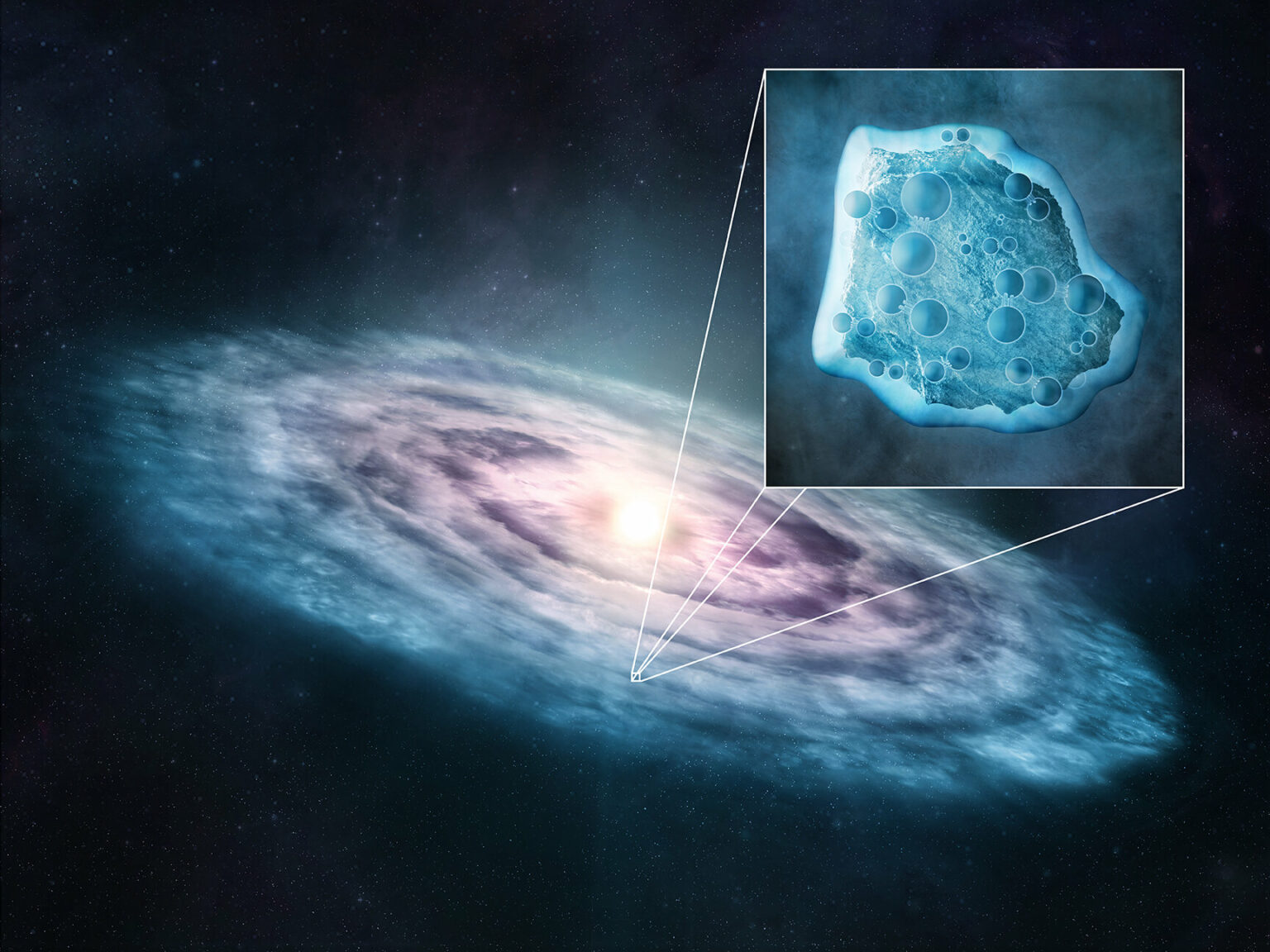Astronomers have solved the mystery of why there is less carbon monoxide in protoplanetary disks than there should be. It turned out that most of it is hiding in ice blocks.

Protoplanetary disks and carbon monoxide
Protoplanetary disks are a mixture of gases and various–sized debris orbiting young stars. They serve as the building material for the formation of planets. One of the most notable compounds is carbon monoxide. But there is a mystery connected with it.
There is 3-100 times less chadny gas in protoplanetary disks than the theory suggests. Such a large spread of results is determined by different observation conditions. This discrepancy greatly hinders scientists, because in many ways this compound determines the mass and some other characteristics of the emerging star systems.
Scientists from Harvard and Smithsonian Universities, led by Diana Powell, were able to solve the mystery. They suggested that carbon monoxide may simply be in a different aggregate state. At the same time, it should be noted that the physical processes occurring inside the planetary disk are considered to be fairly precisely defined. But research has shown that this is not the case.
Ice influences the formation of planetary systems
Powell concluded that within a million years after the protoplanetary disk is formed, carbon monoxide begins to actively condense on fairly rapidly growing ice particles. And carbon monoxide becomes invisible to ground-based telescopes.
In order to test this assumption, scientists compared the resulting model with the results of observing four fairly close young planetary systems: TW Hya, HD 163296, DM Tau and IM Lup. They all confirmed the new model.
The most interesting thing in the new theory is that such a small-scale phenomenon as a phase transition on the ice surface can affect the entire model of the formation of planetary systems. The James Webb Space Telescope could confirm or refute this theory, so many scientists are looking forward to the results of its work.
According to phys.org
Follow us on Twitter to get the most interesting space news in time
https://twitter.com/ust_magazine
